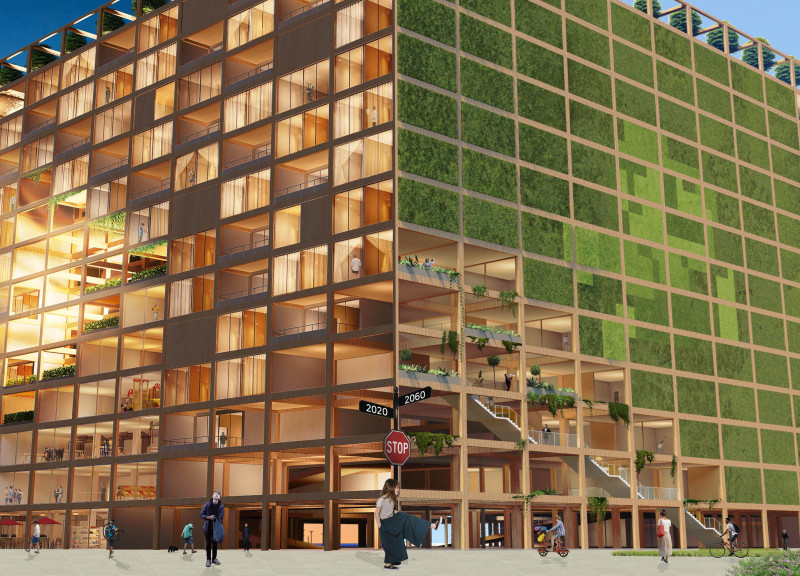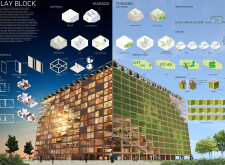5 key facts about this project
Affordable housing in Melbourne is the focus of a thoughtful design that embraces sustainability and modularity. Located in a rapidly changing urban area, the project aims to meet the needs of residents while fostering a sense of community. Central to the design is the use of Cross-Laminated Timber (CLT), which serves as a key structural element. This choice not only supports the building's stability but also aligns with modern eco-friendly practices.
Conceptual Framework
The design prioritizes modularity, allowing for diverse living arrangements that can adapt to the residents' lifestyles. By incorporating CLT into the framework, the structure benefits from efficient construction processes and ensures long-term durability. The arrangement of units encourages flexibility, letting occupants modify their spaces as their needs change over time.
Community Integration
Recognizing the importance of outdoor spaces in urban settings, the design integrates public green areas to encourage interactions among residents. While individual gardens may not be feasible, these communal spaces serve as essential meeting points. They enhance the living environment by promoting socialization and community bonding, which are vital aspects of urban life.
Cultural Engagement
Dynamic blocks feature prominently in the design, providing multi-use spaces for art displays and cultural gatherings. This approach fosters a connection between residents and their surroundings, enabling artistic expression within the residential context. By embedding cultural elements into daily life, the project enriches experiences and cultivates a sense of belonging among its occupants.
The modular walls play a crucial role, creating a balance between private areas and shared spaces. Aside from fulfilling structural requirements, they enhance adaptability within living environments, allowing for personalized touches that reflect individual preferences. The overall design speaks to the need for community-oriented housing that remains flexible in the face of ever-changing urban dynamics.



















































